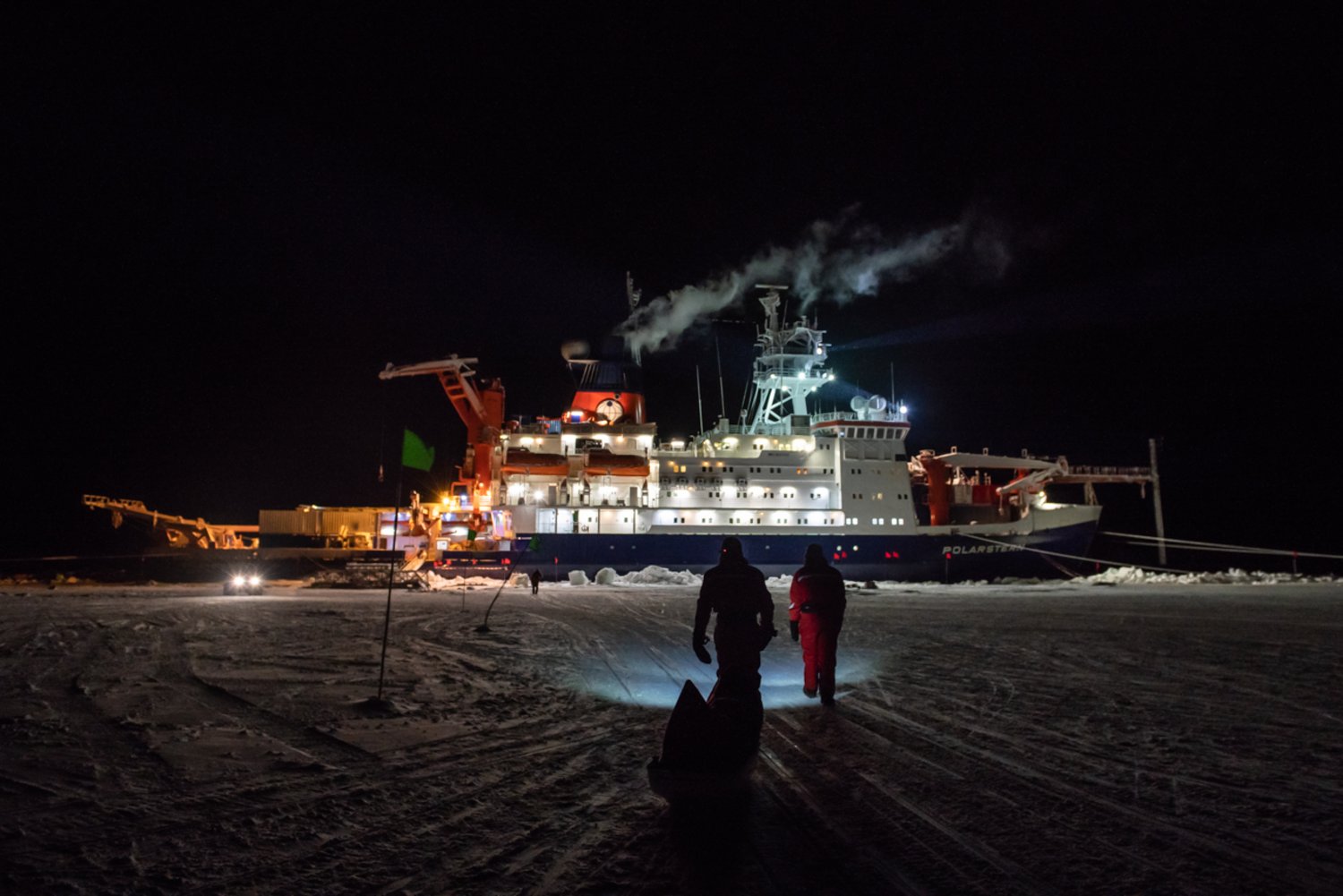
The most famous German research vessel is probably the icebreaker Polarstern. Its participation in the spectacular MOSAiC research mission, during which it was steered into the Arctic sea ice and froze in place, drifting with the ice across the North Pole for a whole winter, made it famous worldwide. However, it is not the only large German research vessel. There is also the SONNE, the METEOR, the MARIA S. MERIAN, ALKOR, HEINCKE and ELISABETH MANN BORGESE.
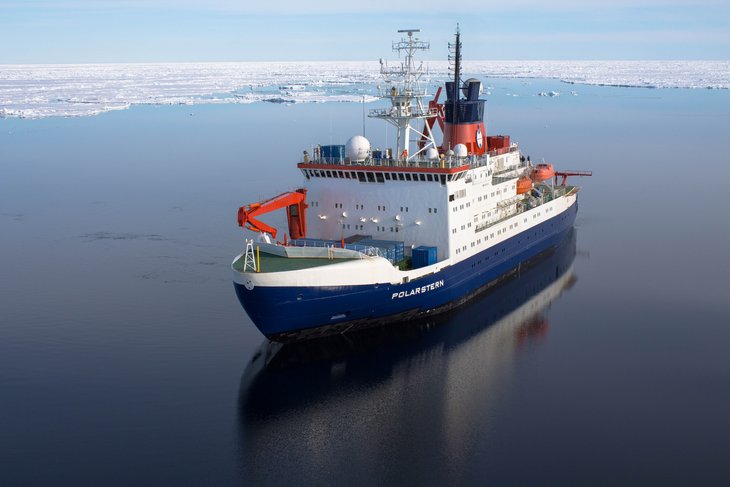
The equipment on board research vessels varies depending on their size and intended areas of operation. In addition to its icebreaking technology, the POLARSTERN has nine specialised laboratories, mobile laboratory containers that can be configured as required, aquariums, and three cold rooms that can cool samples to temperatures ranging from −32 °C to +5 °C. The ship also has 52,620 metres of wire rope, which can be used with winches and cranes to lower large research equipment, such as underwater robots (ROVs), into the water and the depths of the sea. The ship also has a powerful onboard computer for monitoring, data recording and transmission. There is room for up to 55 scientists and 44 crew members on board.
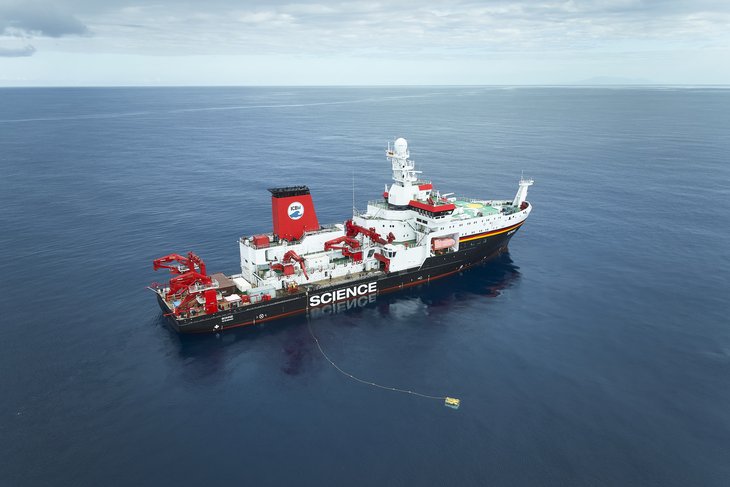
On the other hand, the SONNE mainly operates in the Pacific and Indian Ocean. It has 17 laboratories, including four dry laboratories, two wet laboratories and two climate laboratories. This makes it well-suited to the needs of various disciplines, such as marine geology, geophysics, biology, biogeochemistry and climate research. It enables up to 40 scientists to carry out interdisciplinary work at sea. The ship also has numerous winches and cranes to ensure that large equipment, such as the deep-sea robot ROV KIEL 6000, can be lowered into the water and lifted out again without any problems.
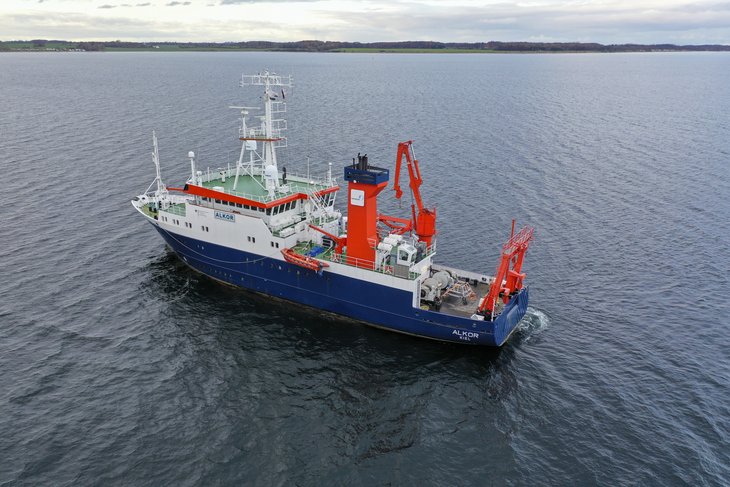
The ALKOR, on the other hand, is a significantly smaller medium-sized research vessel. It primarily operates in the North Sea, the Baltic Sea, the Kattegat and the Skagerrak. It can accommodate up to twelve scientists and has four laboratories where air, water and sediment samples can be examined, among other things. The ALKOR can remain at sea for up to 21 days, but also undertakes day trips. It is available for expeditions with German and European research groups, as well as for teaching and internship trips for students.
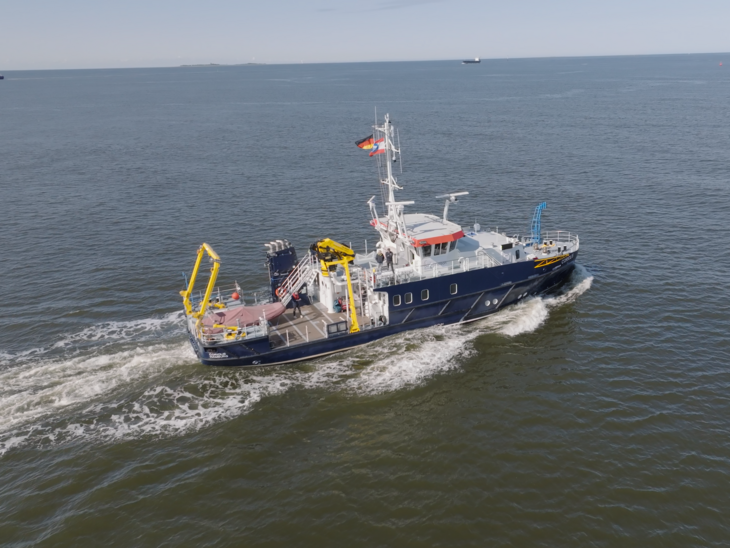
With a draught of just 1.6 metres, the COROLIS can also navigate shallow coastal waters. Up to twelve researchers can study topics such as carbon cycles, the transport of nutrients and pollutants between rivers and coasts in the North Sea and Baltic Sea, and the environmental impact of offshore wind power. All environmentally relevant research data collected during the voyage can be accessed in real time and shared directly with other ships and land stations. The COROLIS succeeded the LUDWIG PRANDTL in spring 2025.
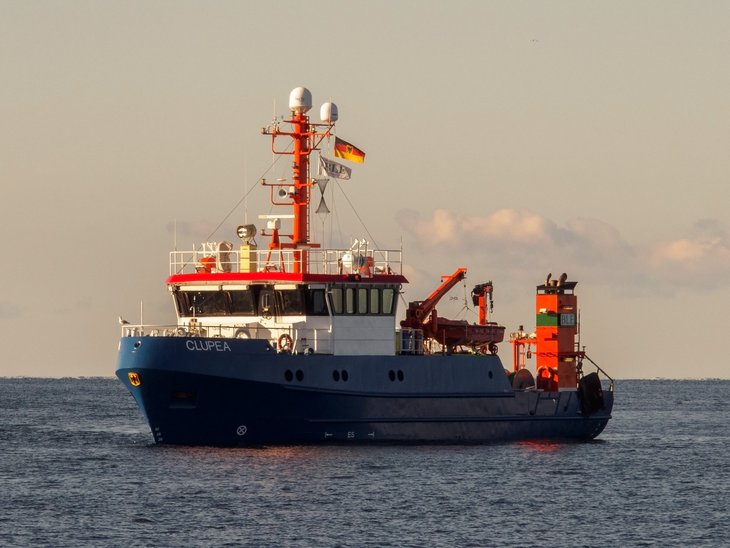
On the other hand, CLUPEA specialises in fisheries research. With a shallow draught of 2.3 metres, it is well suited to operating in coastal waters. It operates mainly in the south-western Baltic Sea, but occasionally in the North Sea too. It is equipped with two laboratories and various nets, including floating and bottom trawls, gillnets, and plankton nets, and can accommodate four scientists.
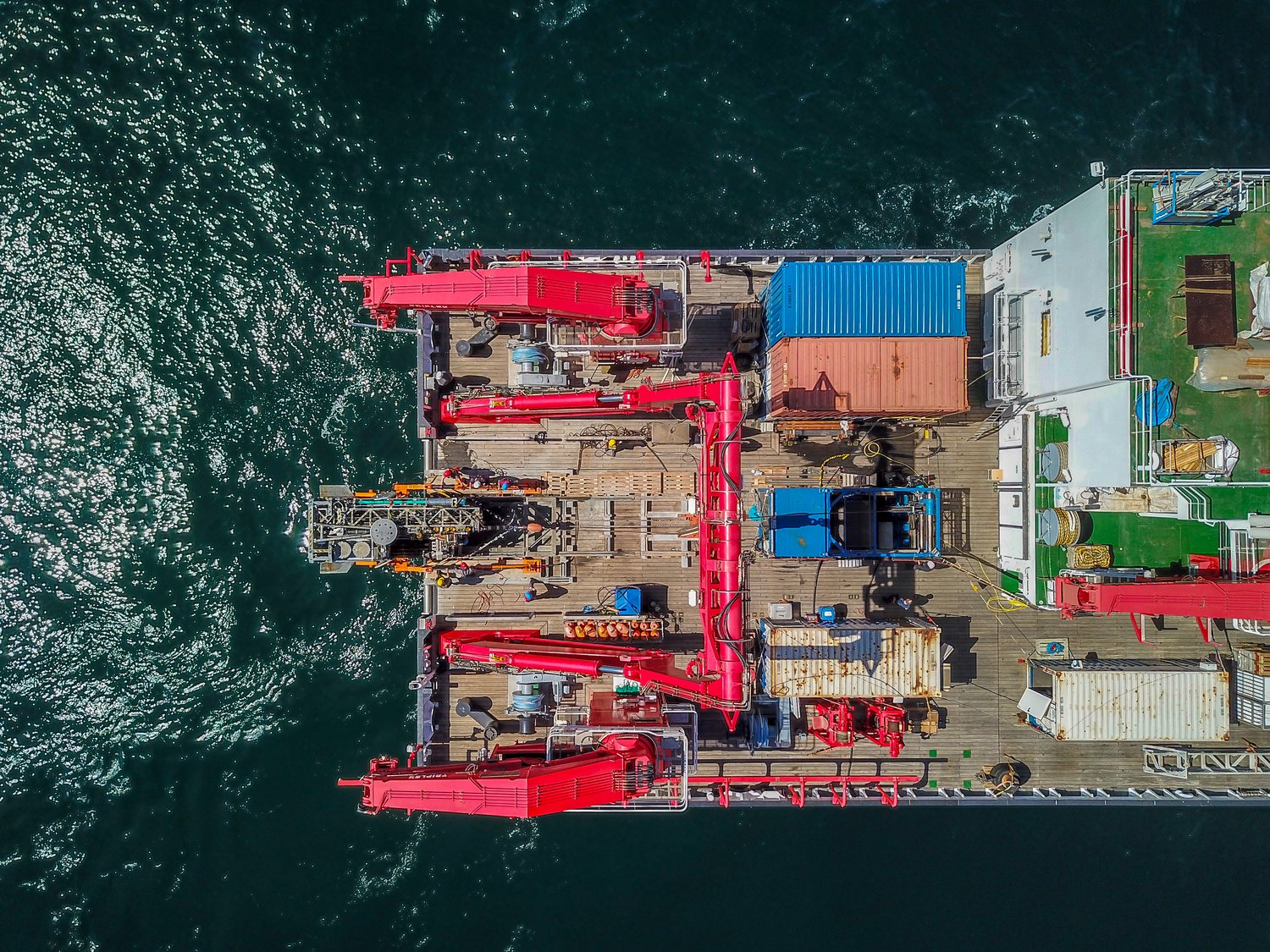
Expedition logistics and planning
Planning a scientific expedition aboard a research vessel is like piecing together a vast and intricate puzzle. Months - sometimes even years - before departure, scientists, shipping companies and logistics teams begin their preparations. Once at sea, there is no resupply: everything, from highly sensitive measuring instruments to simple screws, must be brought on board and stowed safely for the voyage. Added to this are research devices, sample containers, laboratory equipment and computer systems, many of which have to be specially adapted in advance to withstand the harsh conditions of the open ocean.
Everything must then arrive at the port on time and be loaded onto the ship - but not too much, as space and weight capacity are limited. Route planning is equally crucial. It depends not only on the scientific questions being investigated, but also on permits from other countries, seasonal weather patterns and the vessel’s availability. The crew, too, plays a vital part: alongside the captain and navigators, engineers, cooks and technicians are indispensable.
Yet the logistics do not end once the ship sets sail. During the voyage, all onboard systems must run smoothly: power supply, sample refrigeration, data storage. A single failure can wipe out weeks of work. Coordination with shore stations is also essential — harbour stops are often scheduled to store samples or take new researchers on board. Every expedition is a balancing act between scientific ambition and logistical reality.
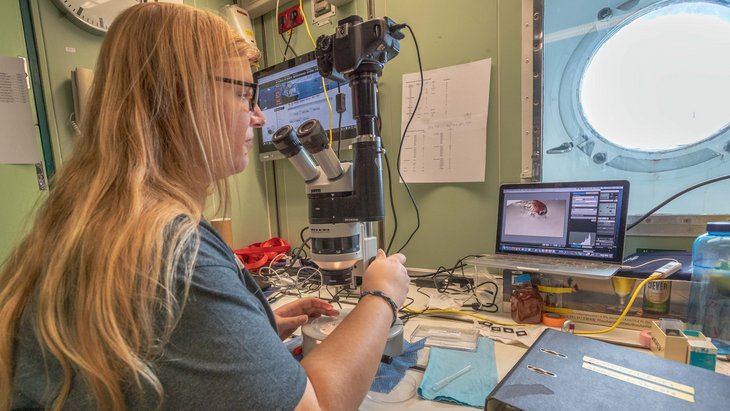
For most marine researchers, participating in an expedition on a research vessel is a rare and exciting opportunity. Places on board are clearly limited, and voyages can last several weeks. Due to the limited space on board, only a certain amount of research equipment can be taken along. This means that 'ship time' (the term used for a research stay on board) is scarce, and the planning process can take up to two years from initial application to departure on large research vessels.
Life on board involves a combination of scientific work in shifts and assisting other researchers or the crew with daily tasks. The day is characterised by cramped conditions and routines, so it is both exciting and exhausting. Sampling, measurements, and the deployment of equipment ranging from plankton nets to underwater robots (ROVs) are carried out continuously, largely regardless of the time of day or weather conditions. There is hardly any free time, but many researchers speak positively about the unique sense of community when everyone is literally in the same boat. They also talk about magical moments when an ROV resurfaces from the deep sea with precious samples on board.
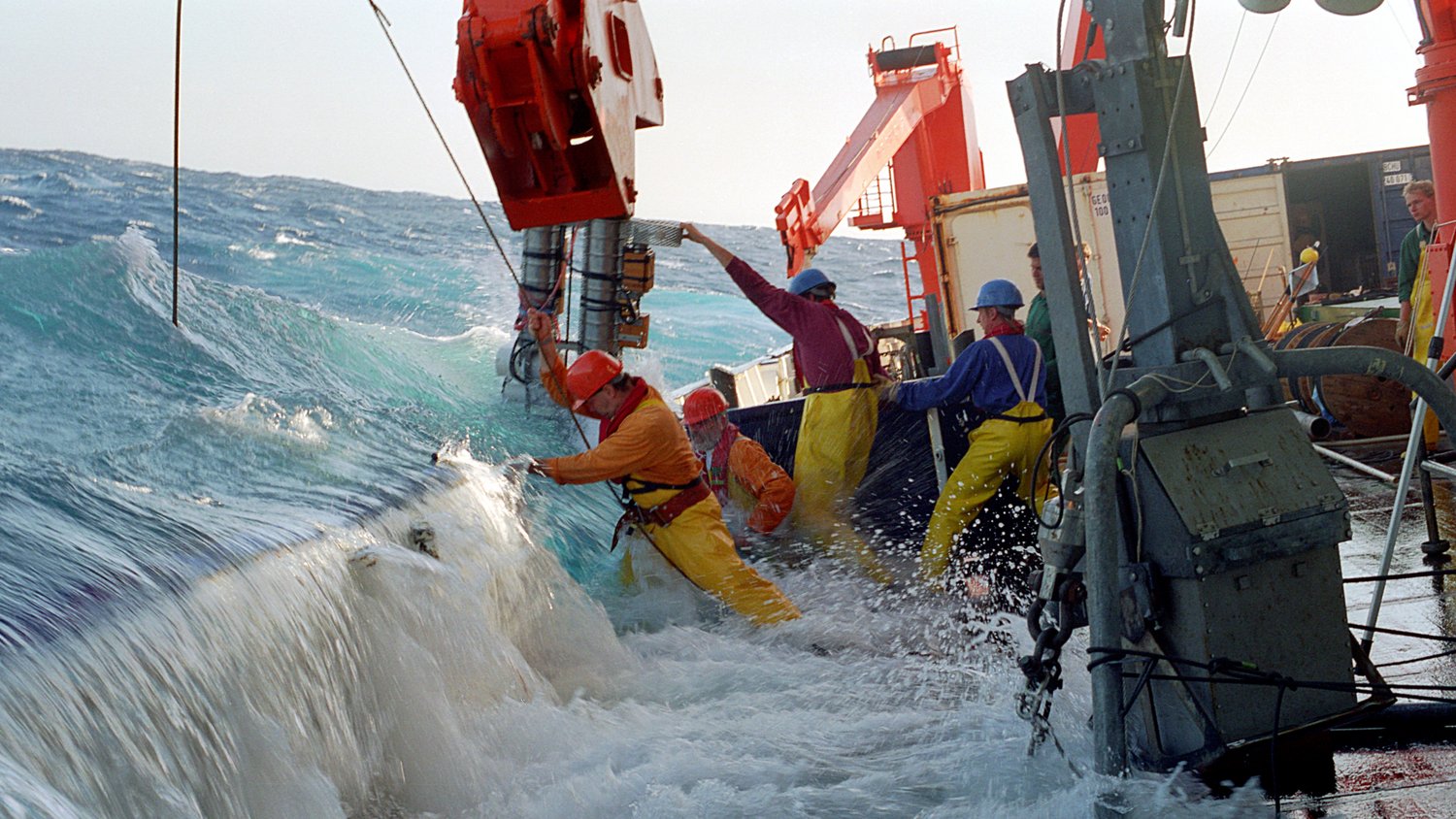
As is customary in maritime operations, research vessels also maintain a captain’s logbook in which data such as weather conditions, the ship’s position and speed are recorded. In addition, the scientific chief scientists compile a cruise report documenting the research conducted on board as well as the data and samples collected.
It is also common for participating researchers and/or the expedition leaders to write weekly reports, recording the progress of the voyage, notable events and initial observations. These are primarily intended for external communication, for example on websites or in press releases. Some expeditions even have their own blogs, where various people on board share insights into life and work at sea. The different reports from each expedition are published directly on the websites of the respective vessels.
Overview of German research vessels
Maximum number of scientists on board: 12 persons
Area of operation: North Sea and Baltic Sea
Home port: Kiel
Operator/user: GEOMAR
Website about the ship: ALKOR
Maximum number of scientists on board: 15 persons
Area of operation: North Sea and Baltic Sea
Home port: Hamburg
Operator/user: BSH
Website for the ship: ATAIR
Maximum number of scientists on board: 2 persons
Area of operation: North Sea and Baltic Sea
Home port: Rostock
Operator/user: BSH
Website for the ship: CAPELLA
Maximum number of scientists on board: 4 persons
Area of operation: Baltic Sea
Home port: Rostock
Operator/user: Thünen Institute
Website about the ship: CLUPEA
Maximum number of scientists on board: 12 persons
Area of operation: North Sea and Baltic Sea
Home port: still to be determined
Operator/user: Helmholtz Centre Hereon
Website about the ship: COROLIS
Maximum number of scientists on board: 7 persons
Area of operation: North Sea and Baltic Sea
Home port: Rostock
Operator/user: BSH
Website for the ship: DENEB
Maximum number of scientists on board: 12 persons
Area of operation: Baltic Sea
Home port: Warnemünde
Operator/user: Leibniz Institute for Baltic Sea Research Warnemünde
Website about the ship: ELISABETH MANN BORGESE
Maximum number of scientists on board: 12 persons
Area of operation: North Sea and North Atlantic
Home port: Heligoland
Operator/user: Alfred Wegener Institute (AWI)
Website about the ship: HEINCKE
Maximum number of scientists on board: 15 persons
Area of operation: North Sea
Home port: Hamburg
Operator/user: BSH
Website for the ship: KOMET
Maximum number of scientists on board: 12 persons
Area of operation: Baltic Sea
Home port: Rostock
Operator/user: University of Rostock
Website about the ship: LIMANDA
Maximum number of scientists on board: 12 persons
Area of operation: Baltic Sea, North Sea and Elbe-Weser estuary
Home port: Kiel
Operator/user: GEOMAR
Website about the ship: LITTORINA
Maximum number of scientists on board: 22 persons
Area of operation: Subpolar Arctic Ocean (ice edge), North Atlantic, Mediterranean Sea
Home port: Rostock
Operator/user: German Research Vessels Control Centre
Website for the ship: MARIA S. MERIAN
Maximum number of scientists on board: 28 persons
Area of operation: Atlantic Ocean, Eastern Pacific Ocean, Western Indian Ocean, Mediterranean Sea and Baltic Sea
Home port: Hamburg
Operator/user: German Research Vessels Coordination Centre
Website for the ship: METEOR III
Maximum number of scientists on board: 35 persons
Area of operation: Atlantic Ocean
Home port: Kiel
Operator/user: GEOMAR
Website about the ship: METEOR IV
Maximum number of scientists on board: 12 persons
Area of operation: North Sea
Home port: Sylt (List)
Operator/user: Alfred Wegener Institute (AWI)
Website about the ship: MYA II
Maximum number of scientists on board: 55 persons
Area of operation: Arctic and Antarctic Oceans
Home port: Bremerhaven
Operator/user: Alfred Wegener Institute (AWI)
Website about the ship: POLARSTERN
Maximum number of scientists on board: 5 persons
Area of operation: North Sea, Wadden Sea
Home port: Wilhelmshaven
Operator/user: Senckenberg Society
Website about the ship: SENCKENBERG
Maximum number of scientists on board: 7 persons
Area of operation: North Sea and Baltic Sea
Home port: Cuxhaven
Operator/user: Thünen Institute
Website about the ship: SOLEA
Maximum number of scientists on board: 40 persons
Area of operation: Indus, Pacific Ocean
Home port: Wilhelmshaven
Operator/user: German Research Vessels Coordination Centre, University of Hamburg
Website for the ship: SONNE
Maximum number of scientists on board: 25 persons
Area of operation: North Sea
Home port: Heligoland
Operator/user: Alfred Wegener Institute (AWI)
Website about the ship: UTHÖRN
Maximum number of scientists on board: 12 persons
Area of operation: Baltic Sea, North Sea, North Atlantic
Home port: Bremerhaven
Operator/user: Thünen Institute
Website for the ship: WALTHER HERWIG III
Maximum number of scientists on board: 7 persons
Area of operation: North Sea and Baltic Sea
Home port: Hamburg
Operator/user: BSH
Website for the ship: WEGA







